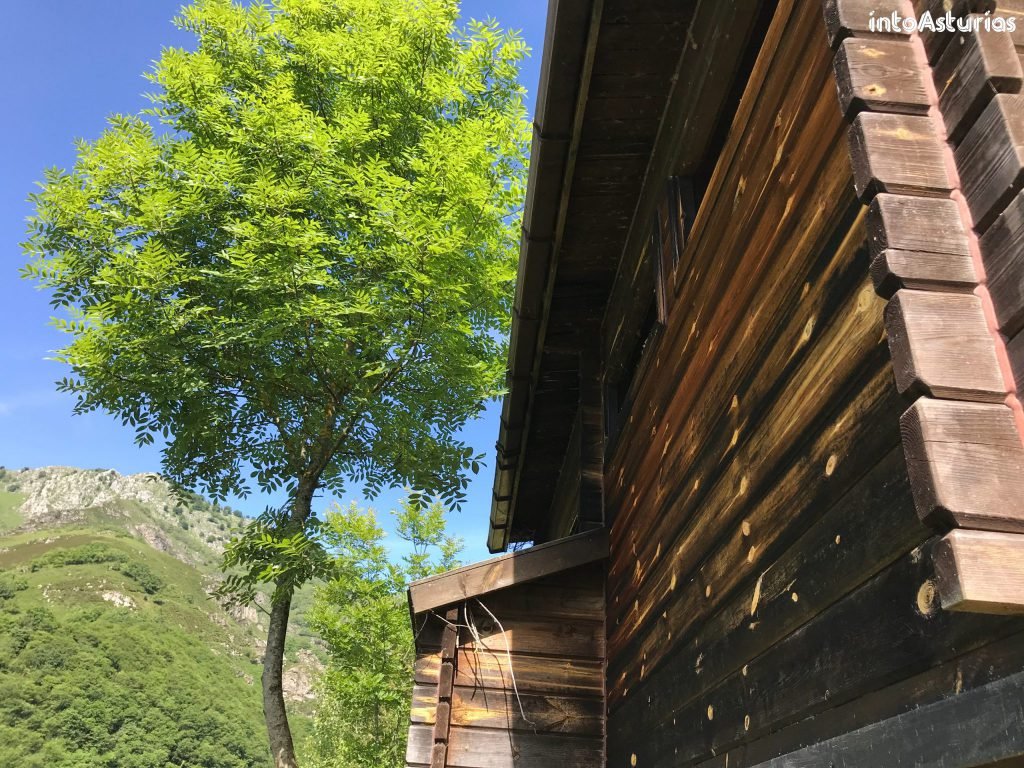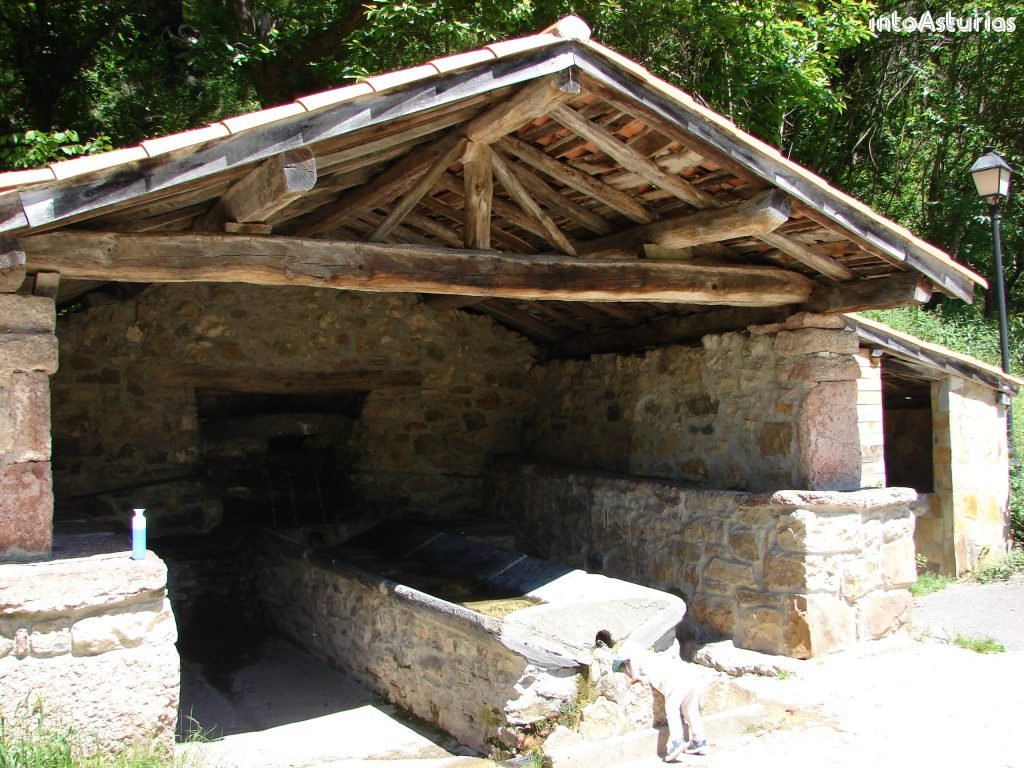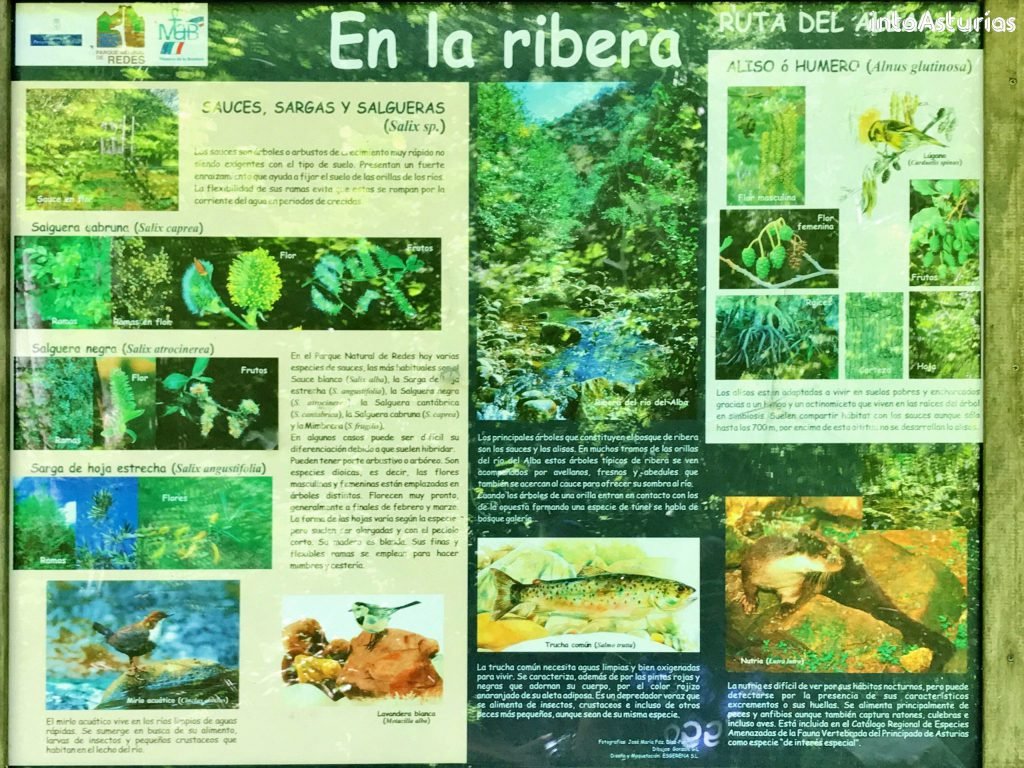Today I take you on a trip through the ‘Parque Natural de Redes‘ in Asturias. Redes is a designated UNESCO biosphere reserve and a special protection area for birds under the European nature network Natura2000. Recently we watched a beautiful documentary about this area: 100 días de soledad, about a man who stays in the park for 100 days and has filmed it himself. A wonderful relaxed film with a goose bumps-moment when the wolves start to cry in the middle of the night. Hence, highest time to explore this area ourselves!
We follow one of the most famous routes in the park: the Ruta del Alba. The tour starts in the village of Soto de Agües. You can also start a few kilometers to the north near the water reservoir at the town Rioseco.

Here, you can spot your first aquatic birds such as Eurasian Teal (Anas crecca) and Common Sandpiper (Actitis hypoleucos). Unfortunately, the birding hut is locked today, but we still have a beautiful view on the reservoir.

In Soto de Agües is a spacious parking lot where we park our car. It is worth buying a delicious bocadillo in one of the bars as there is nothing to get along the route! The route starts at the end of the village where you can also fill your bottle with delicious cool water at the Lavadero; a place where the women of the village traditionally do the laundry and of course discuss the latest news.

The route is 7 km long (and therefore 14 km if you go back the same way) with a difference in altitude of 300 meters. The first 5 kilometers are very easy to do with our stroller and, for example, by bike. We first pass a trout farm, one of the delicacies from this region. Then we walk along the brook Alba for a couple of kilometers.

The trail is well maintained with regular information signs about the local flora and fauna. A small selection:
Birds
White-throated dipper (Cinclus cinclus), Grey Wagtail (Motacilla cinerea), Blue Rock Thrush (Monticola solitarius), Common Rock Thrush (Monticola saxatilis), Eurasian Crag Martin (Ptyonoprogne rupestris), Golden Eagle (Aquila chrysaetos), Raven (Corvus corax), Red-billed Chough ( Pyrrhocorax pyrrhocorax) and Alpine Chough (Pyrrhocorax graculus).
Mammals
Otter (Lutra lutra).
Flora
Hawthorn (Crataegus monogyna), walnut (Juglans regia), hazel (Corylus avellana), black alder (Alnus glutinosa) and goat willow (Salix caprea).
Of course we aim to see an otter today ?.

After 5 km we arrive at a picnic spot where we are faced with the question of whether to go back or leave the stroller here and continue on foot. The last 2 km is a narrow steep path full of stones. We decide to leave the stroller next to a picnic bench and take our daughter in the baby carrier on our back. Fortunately, because this is the best part of the route! We walk along waterfalls and small rapids. The water that drips next to us from the moss-covered rocks is wonderfully refreshing.
At the end of the route we arrive at a refugio where a girl sells cans of drinks and snacks in the weekends. After enjoying the beautiful view, we walk back and refresh ourselves by dipping our bare feet in the ice cold water.

And then, just before we get back at the picnic spot: a White-throated Dipper! The brown-black little bird with the white breast flutters up and down between a rock and the water, searching for insects. No otter for us today, but combined with a beautiful route, a great first introduction to the Parque Natural de Redes!
Parque Natural de Redes for 100 days and has filmed it all by himself.

